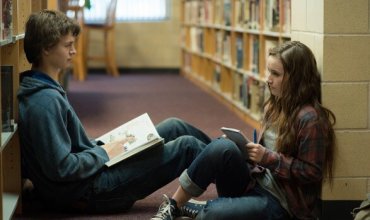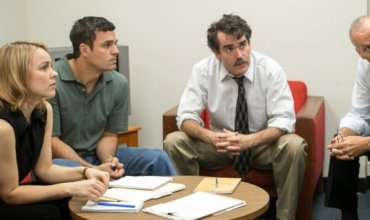Australians love sport. That is part of the international image we cultivate. Sport. ANZACS. Deadly animals. Drop bears. Larrikins. Sport. Those are some of the images and ideas that form the picture we like to present to the world. We have created a fun and likeable image that helps to sell us as a tourist destination. However, asking questions about ourselves and our history is not something we do frequently as a nation. History isn’t all good. There tends to be winners and losers. And self-examination can be a painful process.
THE AUSTRALIAN DREAM is a new feature documentary which starts off being the story of AFL (Australian Football League) footballer Adam Goodes but ends up being about (as its blurb correctly states) race, identity and belonging.
For many of us, talking about race and particularly the history of black and white Australia is right up there with politics and religion as topics to avoid talking about in public, because of the potential for disagreement and heated argument. The approach THE AUSTRALIAN DREAM takes is to begin by slowly unfolding the story of Adam Goodes career. We hear about how his success in the game was to some extent an antidote to the racist abuse he copped as a kid at certain times and places. The film gives us a detailed sense of what it means to become a champion in a sport and what it feels like to become part of the family of a large sporting organisation, in this case, The Sydney Swans.
Here, the documentary goes into territory that has always been questionable in sport and not just in AFL. Namely, the concept that being a champion athlete will somehow break down the barriers of racial discrimination. A number of Indigenous athletes speak about their experiences. They talk about dealing with a skewed perception of being loved for their winning performances on the field and yet simultaneously receiving abuse for who they are from some of the spectators. The amount of racist abuse that has regularly been hurled at Aboriginal players in all codes of football is something that the various sporting organisations have made moves to shut down. Often, the AFL and NRL (Nation Rugby League) have been accused of not moving sufficiently quickly or acting decisively enough. Which is where the social issue of racism in sport becomes a challenge to the lucrative business of professional sport. Racial harmony at the oval is a good thing for ticket sales and television rights.
For Goodes, who loved feeling part of his team, he not only objected to receiving racist slurs on the field but the media blowback when he stood up for himself also had the effect of isolating him from his team and fans. Standing out for being a two-time Brownlow medal winner was an aspiration, getting waves of national attention for standing up for his cause, led to tremendous heartache that affected his life deeply.
The film takes a wealth of media material and builds a compelling story that uses sports to examine how we understand ourselves as Australians. Where do the Indigenous concepts of language, country and culture fit what it means to be Australian, when race is often used as an insult that separates, rather than an element that brings Australia together. In the twentieth century, the creation of a single Australian identity was based on the idea of the “assimilation” of the Aboriginal people until their culture disappeared. We have left this behind, but what we are travelling towards is uncertain.
English director Daniel Gordon is experienced in bringing sports-themed documentaries with controversial stories to the screen such as THE RACE THAT SHOCKED THE WORLD (2012) and HILLSBOROUGH (2016). His approach to bringing forward the numerous strands of the material is skilled and nuanced. Numerous “talking heads” relate their views from Michael O’Loughlin, Brett Goodes, Natalie Goodes, Tracey Holmes, Nova Peris, Nicky Winmar, Gilbert McAdam, Linda Burney, Paul Roos, John Longmire, Nathan Buckley, Eddie McGuire and Andrew Bolt. Broadcaster and journalist Stan Grant has written a well-observed doco that advocates for a particular point-of-view, but he makes sure the voices of the other side, those who wanted to shout down Goodes, are also heard in the mix.
The resulting 90 minutes is a moving and compelling work that asks its Australian audience some powerful question about who we are in the twenty-first Century. (8/10)
NOTE: There is another documentary focussing on Goodes final three years playing for the Swans called THE FINAL QUARTER that was released in June of this year. That film is unrelated to THE AUSTRALIAN DREAM.


